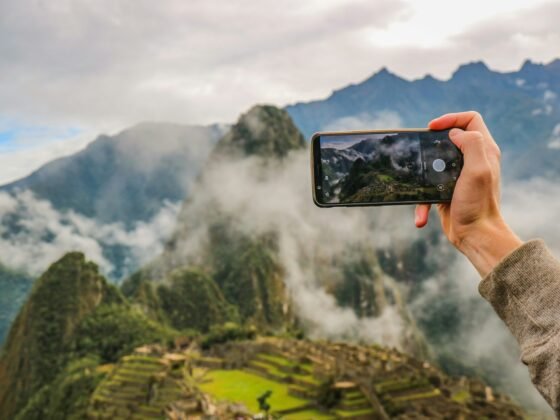In today’s digital age, travelers anticipate instant communication and tailored services from travel agencies. Staying connected is essential for providing safety, convenience, and peace of mind. Discover how travel agencies harness technology, partnerships, and social media to address their clientele’s changing needs.
The Imperative of Staying Connected in Modern Travel
The expectations of travelers have dramatically evolved in the digital age. While guidebooks and flip phones were once the norm, today’s travelers demand instant communication and tailored services via their smartphones and apps.
Several key factors drive this demand for connectivity:
- Safety – Travelers want to stay updated on security risks, health threats, severe weather, flight delays, and other advisories that could impact their trip. Real-time communication allows them to proactively alter plans for maximum safety.
- Convenience – Instant messaging with a travel agent provides on-the-go assistance for bookings, reservations, and general questions. Travelers like having a digital concierge in their pocket.
- Customization– Platforms like social media allow personalized engagement between travelers and travel agencies during trips. This adds a personal touch to the experience.
- Reassurance– Periodic check-ins from travel agents provide clients with peace of mind that their trip is on track and someone is looking out for them.
- Loyalty – Studies show that 80% of travelers report feeling less stressed when kept informed by their agency via timely communication. This drives brand satisfaction and loyalty.
For these reasons, remaining continuously connected with clients is now imperative for travel agencies to thrive. Failing to embrace this digital shift risks disengaged, dissatisfied, and potentially unsafe customers.
Given that 80% of U.S. citizens report reduced stress after traveling, it underscores the modern traveler’s need for peace of mind. One way travel agencies are ensuring this is through initiatives like the Smart Traveler Enrollment Program (STEP).
Smart Traveler Enrollment Program (STEP)
The Smart Traveler Enrollment Program, or STEP, is an initiative by the U.S. government that allows travelers to sign up for alerts and advisories specific to their international trips. Travel agencies utilize STEP as a primary tool for maintaining connectivity with their clients.
Any U.S. citizen traveling abroad can create a free STEP account on the State Department’s website. Users input details of their upcoming international trips, which include destinations, dates, accommodations, and travel companions.
Based on this trip information, enrolled travelers receive email alerts if the State Department issues any travel advisories, warnings, or health/safety notices related to their destinations and travel timeframe. These critical updates allow travelers to proactively alter plans or take precautions as needed.
Agencies are encouraging clients to enroll in STEP before international trips. This provides peace of mind, knowing travelers will be automatically notified of any government advisories impacting their specific itinerary.
While STEP provides individual travelers with tailored advisories, broader cooperation between the private sector and the U.S. government is also essential. This is where the Overseas Security Advisory Council (OSAC) comes into play.
Leveraging the Overseas Security Advisory Council (OSAC)
In addition to initiatives like STEP, partnerships between the government and private sector also enhance travel safety communication. The Overseas Security Advisory Council (OSAC) promotes cooperation between US businesses and the government on security issues.
OSAC provides open-source intelligence, like travel alerts and warnings. Travel agencies can integrate these advisories into their client communications, ensuring they take the necessary precautions. OSAC also offers free newsletters with the latest security analysis insights.
By utilizing resources such as OSAC, travel agencies ensure they’re informed about global risks. This allows them to relay critical security information to customers through their various communication channels, including phone, email, mobile apps, and many third-party call center applications.
Beyond formal advisories, the digital age offers a plethora of platforms for real-time updates. As 52% of individuals mention enhanced connection with family and friends during a vacation, it’s clear that social media is instrumental in maintaining these connections.
Apart from formal advisories, platforms like Facebook and Twitter enable agencies to communicate with travelers in real-time. Agencies can instantly disseminate travel alerts and security risks to clients via social media. Geo-targeting ensures alerts reach customers currently in impacted regions.
However, algorithms sometimes inhibit travel updates from reaching all followers. Agencies should encourage clients to turn on notifications, engage regularly with posts, and check in before/during trips. Statistics reveal that 52% of individuals feel a stronger connection to their loved ones when updated via social media during their travels.
As the landscape of travel continues to evolve, so do the methods agencies employ to stay connected with their clientele. By leveraging technology, partnerships, and the power of social media, agencies are ensuring that travelers are not only informed but also engaged, safe, and satisfied.
Other Innovative Methods for Staying Connected
Beyond social networks, travel agencies employ various innovative technologies to interact with their clients:
- RSS Feeds – Allow customers to subscribe to real-time travel advisory feeds.
- Chatbots – Offer round-the-clock immediate responses to travelers’ queries through AI chat agents.
- Mobile Apps – Send push notifications to customers about urgent travel alerts or flight delays.
- API Integration – Streamlines transferring travel data from airlines/hotels into agency systems and customer profiles.
The Future of Connectivity in Travel
As technology progresses, travel agencies will continue finding new ways to serve customers in real-time. Chatbots leveraging conversational AI will offer more natural interactions. Virtual reality could allow customers to digitally experience destinations and hotels pre-trip.
Biometrics may facilitate traveler identification, allowing customized alerts based on identity. And crypto payments through blockchain could become more commonplace, with stablecoins like USDT offering a reliable and convenient way to pay. The current USDT price reflects its peg to the US dollar, making it a familiar and potentially attractive option for everyday transactions.
While the travel landscape will keep evolving, human agents will remain pivotal in providing personalized service. By integrating technology and emphasizing authentic customer relationships, agencies perpetuate their success through well-connected travelers.
Frequently Asked Questions
- How can travelers ensure they don’t miss travel alerts on social media?
Turn on notifications for agency accounts, regularly engage with their posts, and check in before/during trips. Direct messaging agencies are also an option.
- What are the main benefits of enrolling in STEP?
STEP allows travelers to enter trip details and then receive email alerts from the State Department related to safety, security, and travel conditions specifically for those destinations/dates.
- How does API integration benefit travel agencies?
API integration allows for the automatic transfer of real-time travel data like bookings, delays, and cancellations between industry partners. This data populates customer profiles and allows instant alerts.
So in summary, by harnessing digital channels, strategic partnerships, and a focus on customer relationships, today’s travel agencies are staying connected with clients for maximum safety, convenience, and satisfaction. As technology progresses, even more innovations will further enhance this connectivity. The future remains bright for keeping informed travelers happily on the go.












